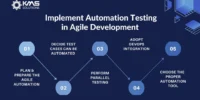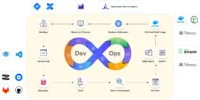As the world of web development continues to evolve, so does the need for flexible and scalable UI architectures. Enter Micro Frontends—a transformative approach to building user interfaces that embraces modularity and independence. In this quick guide, we’ll explore essential tips for giving your UI architecture a Micro Frontends makeover that’s sure to leave your users impressed and your development team empowered!
The Micro Frontends Advantage: Breaking Down the Monolith ️
Micro Frontends represent a departure from traditional monolithic architectures. Instead of dealing with a massive, tightly coupled codebase, Micro Frontends allow you to break down your UI into smaller, independent parts. Each part, or micro frontend, operates as a self-contained unit, offering benefits like improved maintainability, faster development cycles, and enhanced collaboration among teams.
Decompose Strategically: Identify Micro Frontend Boundaries
The first step in your Micro Frontends makeover is to strategically decompose your existing UI. Identify natural boundaries within your application that lend themselves to modularization. Consider functional components, user workflows, or distinct sections of your application. Breaking down your UI into well-defined micro frontends sets the stage for a more modular and maintainable architecture.
Choose the Right Framework: A Palette of Possibilities ️
When embarking on a Micro Frontends makeover, choose the right framework for your needs. Whether you opt for a library like React or Vue, a framework-agnostic approach, or a specialized Micro Frontends framework like Single SPA, ensure that your choice aligns with your project’s requirements and the preferences of your development team.
Standardize Communication: A Symphony of Collaboration
Effective communication between micro frontends is crucial for a cohesive user experience. Establish standardized communication protocols such as custom events, state management, or a shared API gateway. Consistent communication ensures that your micro frontends work harmoniously, delivering a seamless and integrated user interface.
Independent Deployment: A Ballet of Autonomy
One of the key advantages of Micro Frontends is the ability to independently deploy and update individual modules. Leverage this autonomy to streamline your release process and reduce deployment dependencies. Each micro frontend can be updated without affecting the entire application, facilitating faster releases and reducing the risk of unintended side effects.
UI Composition: Orchestrating the Masterpiece
UI composition is the art of orchestrating your micro frontends into a cohesive user interface. Choose an approach that suits your needs, whether it’s server-side composition, client-side composition, or a combination of both. By carefully composing your UI, you can deliver a seamless user experience while maintaining the benefits of modularity.
Shared Libraries: Cultivating a Garden of Reusability
Foster a culture of reusability by creating shared libraries for common functionalities, styles, and components. Encourage your development teams to contribute to this shared garden, cultivating a collection of reusable assets that can be leveraged across micro frontends. This not only enhances consistency but also accelerates development cycles.
Testing Strategies: A Rigorous Dress Rehearsal
Implement comprehensive testing strategies to ensure the reliability and stability of your Micro Frontends architecture. Adopt unit testing, integration testing, and end-to-end testing methodologies. A rigorous testing regimen allows you to catch issues early in the development process, reducing the likelihood of bugs and enhancing the overall robustness of your UI.
Monitoring and Analytics: The Conductor’s Baton
Instrument your Micro Frontends architecture with robust monitoring and analytics. Track user interactions, performance metrics, and error rates to gain insights into the health and usage patterns of your application. Monitoring acts as the conductor’s baton, allowing you to fine-tune your orchestration and continually enhance the user experience.
Continuous Improvement: A Symphony of Evolution
Micro Frontends are not a one-time transformation; they represent a continuous journey of improvement. Encourage a culture of continuous improvement within your development teams. Embrace feedback, analyze performance metrics, and iterate on your Micro Frontends architecture to adapt to evolving requirements and deliver an ever-improving user experience.
Conclusion: Unleash the Potential of Micro Frontends
Your UI architecture is the canvas upon which user experiences unfold. With a Micro Frontends makeover, you’re not just redecorating; you’re revolutionizing the way your application is built and maintained. By strategically decomposing, choosing the right framework, standardizing communication
, enabling independent deployment, orchestrating UI composition, cultivating shared libraries, implementing testing strategies, monitoring with analytics, and embracing continuous improvement, you’re unleashing the full potential of Micro Frontends. Let the symphony of modularity and autonomy elevate your UI to new heights!








